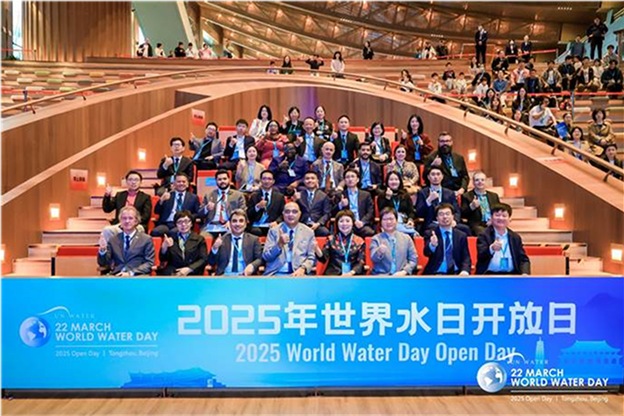The 2025 World Water Day Open Day was held in Beijing, on March 22,
co-hosted by the IWHR and UNESCO, and co-organized by the Beijing Grand Canal
Museum and IRTCES. Ms. PENG Jing, President of IWHR and Director of IRTCES, and
Mr. Shahbaz Khan, Director, UNESCO Regional Office for East Asia, delivered
remarks. Representatives of embassies and consulates in China including Pakistan,
Cambodia, Malaysia, Mongolia, Saudi Arabia, Thailand, Iran, Indonesia, Zambia,
France, Mexico, Uruguay, and Australia, along with international organizations
involved in water affairs, attended the event.

Under the theme “Flowing Harmony, Renewed Legacy”, this year’s event
spotlighted the Grand Canal, celebrating its cultural heritage and ecological
revival.
Constructed as early as the 5th century BC, the Grand Canal
stretches over 1,800 kilometers (1,100 miles) from Beijing to Hangzhou in eastern
China. As the world’s longest and most ancient artificial waterway still in use
today, it was inscribed as a UNESCO World Heritage Site in 2014.
However, this ancient waterway has been disrupted for almost a
century due to river course change, insufficient maintenance, and other
reasons, with disrupted navigation, worsening water quality, and damaged
eco-environment.
In 2022, China launched a large-scale revitalization effort,
channeling water into the canal through the landmark South-to-North Water Diversion
Project. This effort not only restored flow to the canal but also rejuvenated
surrounding ecosystems and communities.
In her opening remarks, IWHR President, and Director-general of
IRTCES, Dr. Peng Jing emphasized that the canal’s revival exemplifies China’s
response to its water challenges, particularly the highly uneven spatial and
seasonal distribution of water resources. She noted that China’s development of
the National Water Network which integrates thousands of natural and artificial
waterways aims to foster a future where humans and water coexist in harmony.
Representatives from embassies and consulates in China as well as
international water-related organizations also shared national perspectives on
water challenges and explored avenues for future international cooperation.

